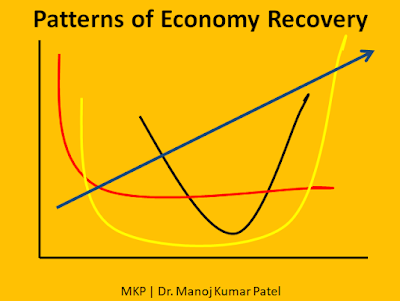Investment in R&D
Investment in R&D and its Impact:
Special Reference to Explosives for Rock Blasting
: Dr. Manoj Kumar Patel :
: Dr. Manoj Kumar Patel :
The purpose of a business is to earn a profit. Thus, investment for profit is a general concept.
Investments for doing business are made for purchases of land and plant machinery, construction of buildings and storehouses, the establishment of logistics, procurement of input materials, and recruitment of manpower. When all these things are put together, business starts happening and profits accrue. With all these things in place, the business now should run like a perpetual machine. But that does not happen. Huge successful business organizations like Ford Motors, Xerox, Sears, Roebuck and Company, Pan American World Airways (Pan Am), Trans World Airlines (TWA), Eastman Kodak Co., more commonly referred to as Kodak (KODK), Pontiac of General Motors Co. (GM), Jordache, Compaq, US Airways, Enron, Woolworth's, Standard Oil vanished from the market and also from our minds.
So, there is something, other than these plain investments, which plays a vital role in keeping business organizations sustainable. And that something is; R&D or more appropriately “investment in R&D”. The business has got to catch up to explore and fulfill the latent needs of consumers. Organizations that fail in fulfilling newer demands of consumers ultimately disappear from the business.
Hence the crux is to invest in R&D and get newer features added to the existing products and also to introduce newer products to the market.
Let us consider a simple example of cinema theatres where the concept was to have a good auditorium. Consumers had a latent desire to spend some time leisurely before entering the theatres. This was realized by some entrepreneurs who built some shopping centers and eateries around the theatres. Cinema-goers thronged into such theatres. And now you see, cinema theatres are a part of big shopping malls. Things have changed as per the demand of the consumers. Now theaters are not stand-alone entities, they are a part of huge malls.
Similar is the case with commercial explosives business. In India; hitherto pioneer and forerunner and the biggest ones are now well taken over by other explosives manufacturers who once were pigmies in comparison to the erstwhile leaders. The reason is, that the earlier leaders could not cope up with the changing demands of products and demands of the mines and tunneling, roads and bridges, defense sectors who depended on explosives. Other smaller manufacturers quickly realized the situation and they agilely invested in R&D and came up with newer, cheaper, and niche products. These organizations grew leaps and bounds and are now ruling the explosives market in India as well as in most of the parts around the Globe.
Take the example of cast-boosters used in mining operations and rock blasting activities. Each one is manufacturing it with TNT and PETN combination at a particular proportion. So input material cost is the same for every manufacturer. How can then anyone make a good profit? It has got to be seen differently or else a price war with quality dilution will take place in the explosives market. There are good substitutes available to TNT and PETN. To use these substitutes one has to invest in R&D and study behavior of inputs as well as the finished product over a period of time and then the same can be put to commercial use. A manufacturer who will do this initial investment will run ahead of all others in terms of business and profits.
Further, take the example of ANFO. All over the world, it is manufactured as a straight jacket product and thus it has got two major disadvantages from a business point of view. In the first point, the cost of raw materials is more or less identical for all manufacturers. So one has to get into a price war to keep his business alive. Secondly, in some applications, ANFO having 917 Kcal/kg becomes an over-designed product while in other applications it becomes an unsuitable product. Now, suppose one invests in R&D and develops ANFO with different formulations and energy content then the same ANFO can be manufactured and marketed as various site-specific products. Let us say ANFO 70, ANFO 80, and ANFO 90 will be designed through R&D investments. The cost of ANFO and energy of different ANFO will then become different and the manufacturer of these four types of ANFO can cater to the satisfaction of the customers’.
There are numerous opportunities wherein investment in R&D is required to develop niche, safer, more powerful products at a lower cost. This will bring in a win-win situation both for explosives manufacturers and mining sectors.
So, the learning is that today's’ successful products and processes are not a guarantee to future success and sustainabilities. One has got to invest in R&D in order to remain and grow in business. There is no other secret formula.
================



R&D is the heart where innovative ideas get converted into products.
ReplyDeleteThank you
DeleteThank you
Delete